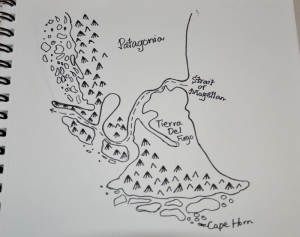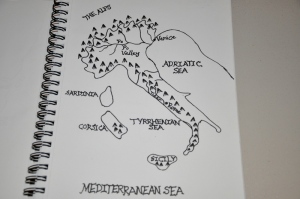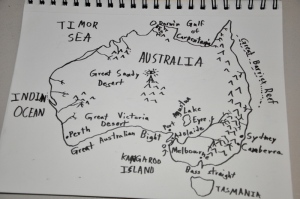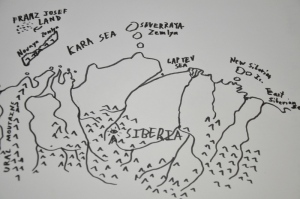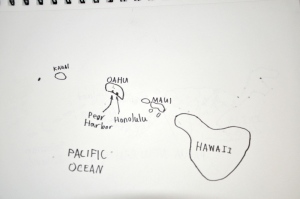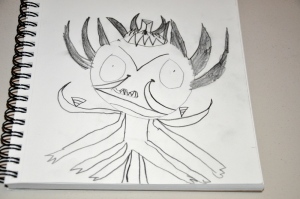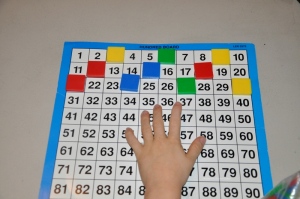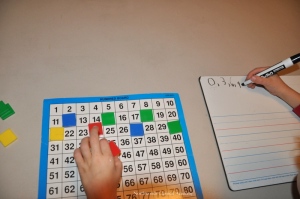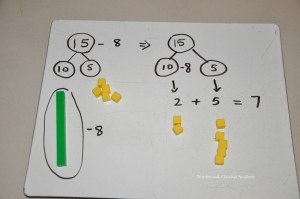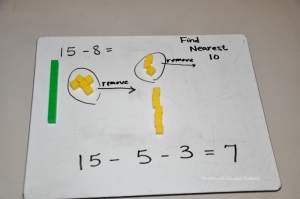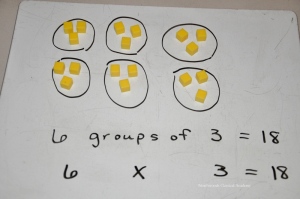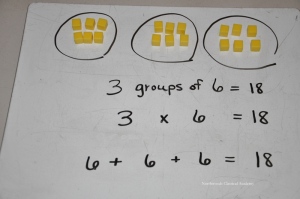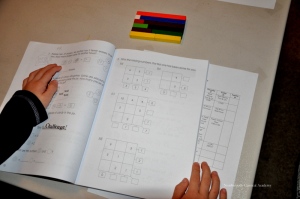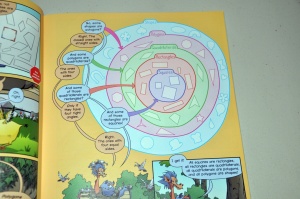
One of our favorite curricula that we’ve used during the past year has been Ellen McHenry’s Mapping the World with Art (MtWwA). I’ve had several readers email me curious about how we use it. This week we finished our lessons and are working on the final project. Here is my overview of how we used it and thoughts on the curriculum.
Overview:
I originally purchased MtWwA for Geography only, but soon realized that it’s a combination of geography, cartography, art and even a little history. It works best for middle school and up (though my 8 year old enjoyed it when he was able to go at his own pace). The book is divided into four parts: 30 Readings, 30 Map Drawings, 23 Activities, and a Final Project where students create a world map.
The Readings section begins with history of the first maps and guides the reader in how they’ve been developed through time – with earlier maps being less complex than later ones. The reader is taken on a journey to a better understanding of how and why maps developed from necessity and exploration from ancient Greece through modern times. My children and I appreciated the perspective it gave us. For example, we were impressed when comparing a map that was made when the Pilgrims landed in America in 1650 with a modern map on our wall – realizing how much more we know now and that 1650 was not that long ago! The section finishes with a discussion of how GPS satellites have revealed the entire surface of the Earth to us. Interesting.
Next is the Map Drawing section intended for students to draw maps of countries and continents of the world. In this portion each lesson shows detailed step-by-step instructions. We purchased the optional DVD instructional video in which the author leads you through the map drawings. It is interesting to hear the author’s take on each map. At the beginning of each DVD lesson, the tools needed for that particular lesson are displayed on the screen so you know what to have available for that day. (Tools needed throughout the course include a ruler, compass, protractor, pencil with eraser, large eraser, and a black waterproof pen.)
The third part is an optional Activities section which provides projects and reinforcement for the earlier topics. Some of the activities include extra drawing practice, arts and crafts, games, and review worksheets.
Finally, there is a final project. It gives students the opportunity to put all the information they’ve learned together by creating a world map. Templates are provided to photocopy to guide them along.
How we used it:
Like many people we don’t have unlimited time, so I chose Thursdays to cover only the parts of the program that I thought would work best for us. We covered about one lesson per week consisting of the Readings and Map Drawing sections. During our morning journal time, I’d cover the Readings. This would often spark fascinating, meaningful discussions about both history and the level of understanding of the geography of the world for those who lived in earlier times.
In the afternoons we’d watch the DVD’s and follow along with the author whose knowledge on the subject was impressive. The DVDs give you the option to pause to wait for everyone to have the time they need, and I’d also have the book open as an additional help if anyone wanted to see the drawings each step of the way.
We did not use the Activities section.
For the final project there are several options, and I chose the option of photocopying the 6 page templates to give the general idea how the continents and oceans fit together. I thought this would best fit our goals and would keep frustrations to a minimum. The final project is important to help students visualize how all the pieces they’ve drawn fit together as a whole.
When done in the time frame I used, some of the lessons may take multiple weeks to cover. For example, Map Drawing 29 has parts A-G. It took us 3 Thursdays to get through it. Overall, it took us about 1.5 years to get through the entire book (with taking the summer months off.)
My thoughts:
We did not try to rush to get through this, and I considered it a fun elective.
Drawing the maps and thinking through the shape of the land helped them remember the information. In addition, we learned some more in depth drawing skills with compasses and protractors while sketching the continents and countries. The final project drawing at the end helped cement the locations and gave us an important big picture view. These factors combined with the fascinating history in the readings made for a positive educational experience. For these reasons, I highly recommend Mapping the World with Art.
